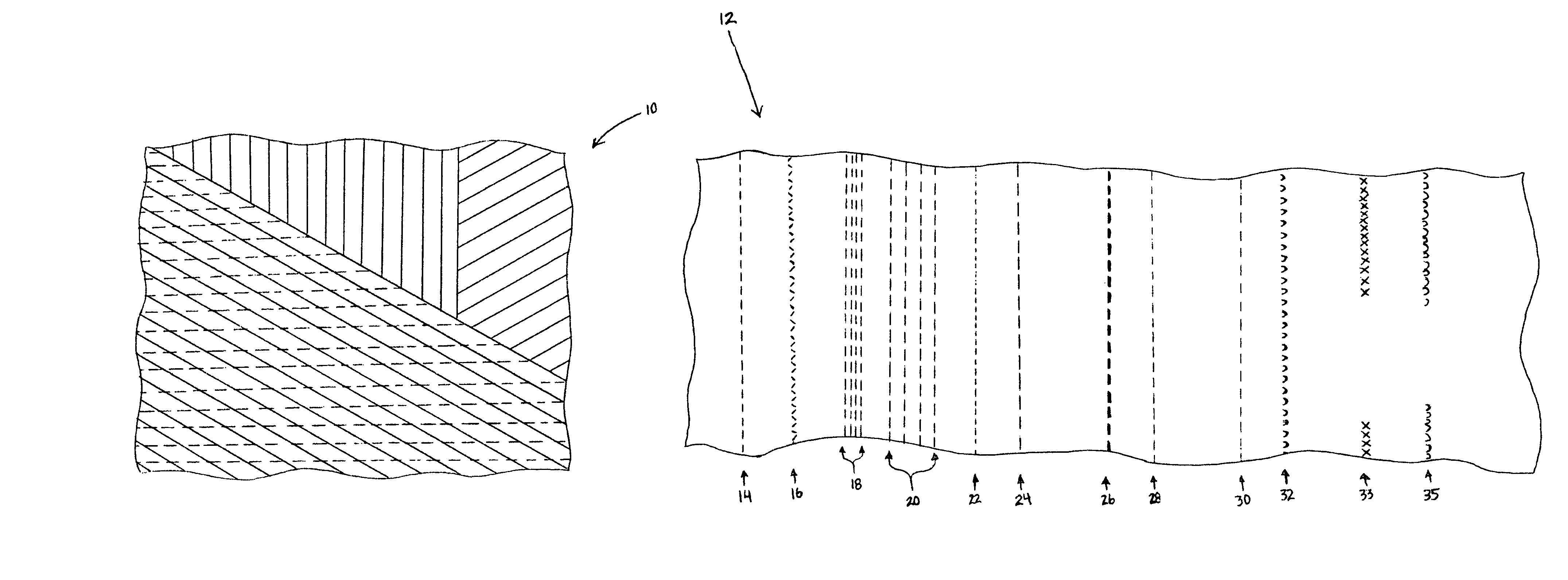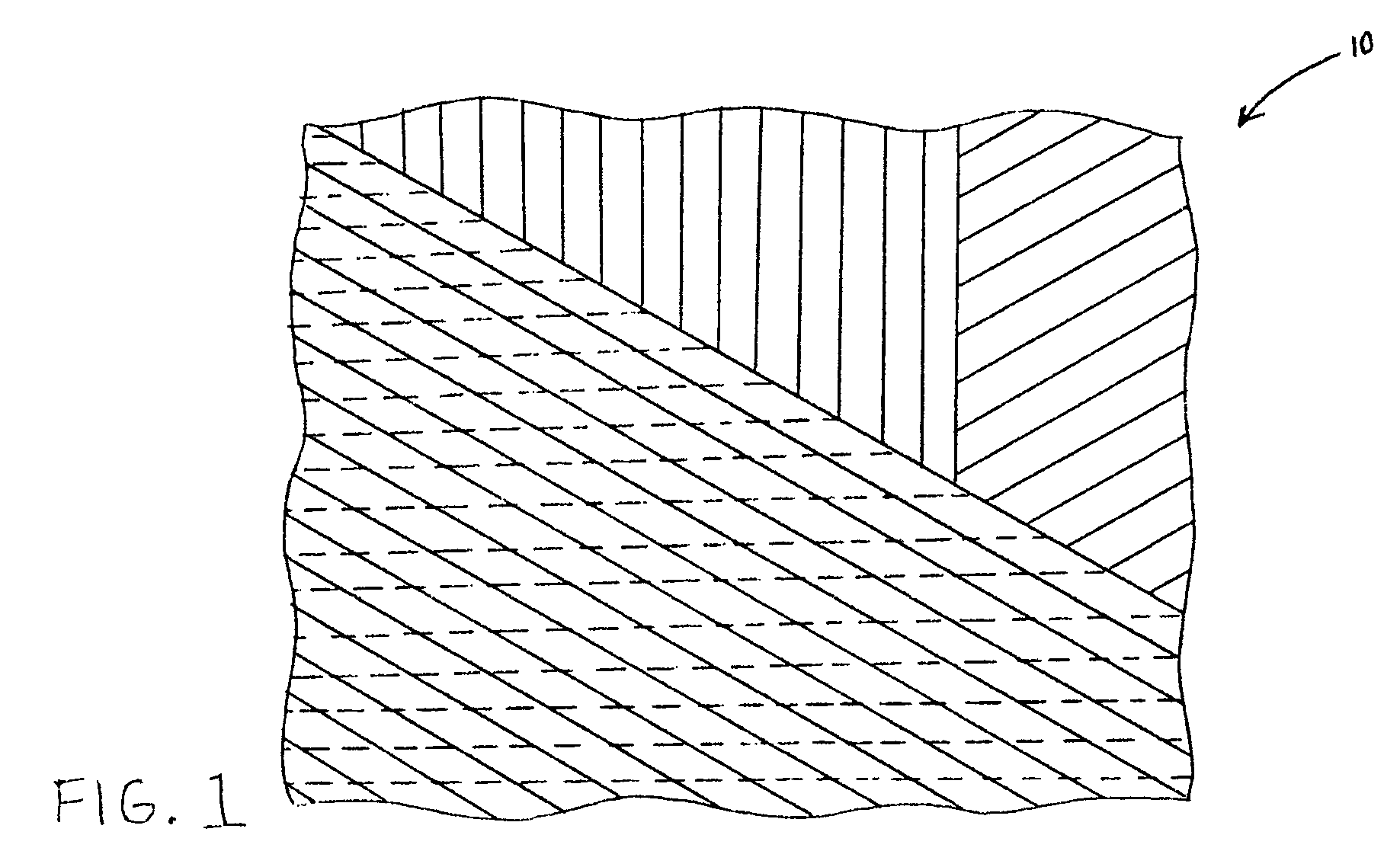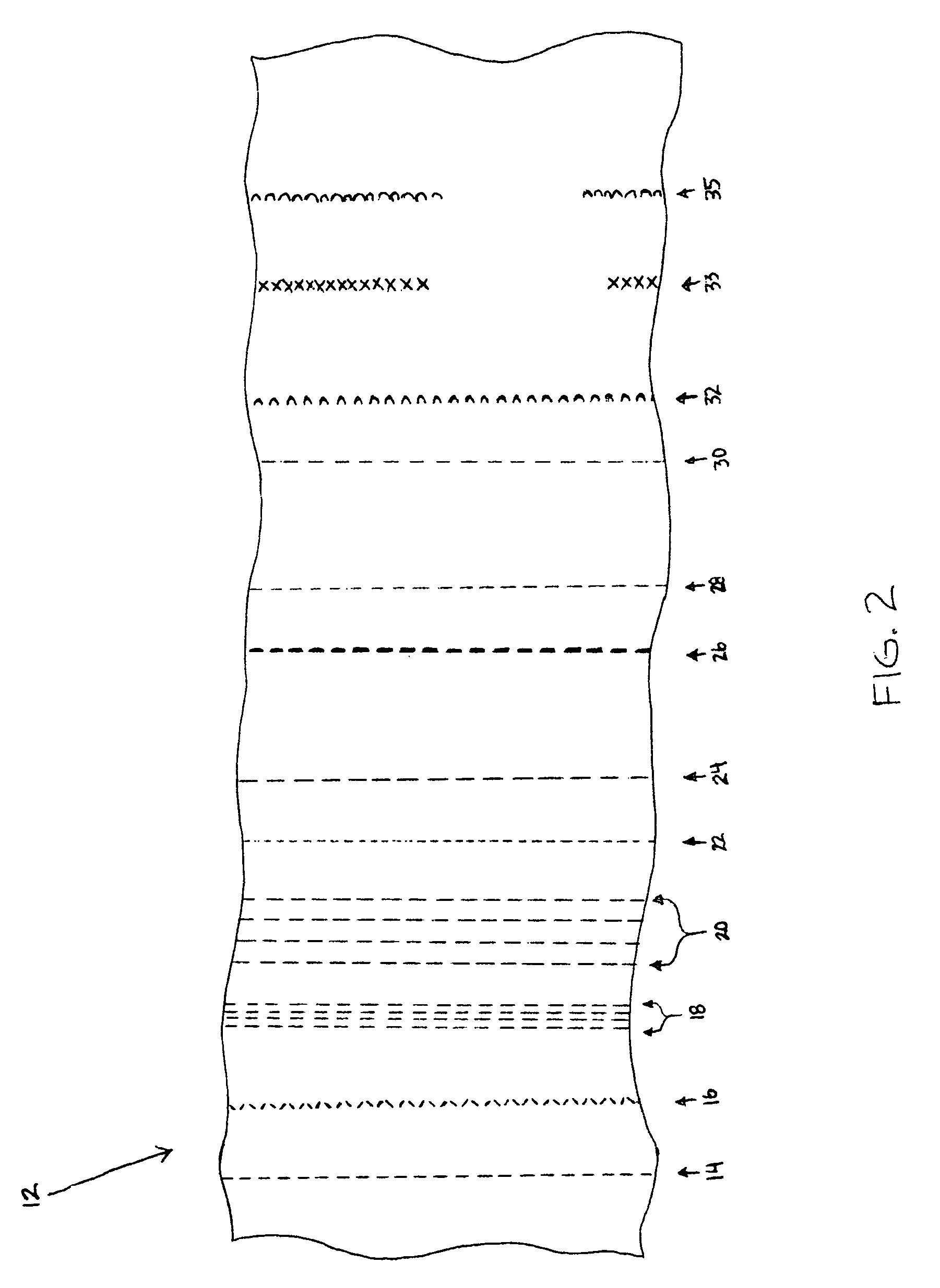Methods for improving conformability of non-crimp fabric and contoured composite components made using such methods
a technology of non-crimp fabric and composite components, which is applied in the direction of knitting, ornamental textile articles, sewing stitches, etc., can solve the problems of increasing material waste, reducing the automation of the component fabrication process, and reducing the production cost of braided fabric, so as to achieve the effect of improving the conformability of non-crimp fabri
- Summary
- Abstract
- Description
- Claims
- Application Information
AI Technical Summary
Benefits of technology
Problems solved by technology
Method used
Image
Examples
Embodiment Construction
[0014]Embodiments described herein generally relate to methods for making a self-conforming non-crimp fabric comprising tailoring at least a first parameter to anchor the fabric and at least a second parameter to provide conformability of the fabric, the first and second parameters selected from the group consisting of stitch type, stitch spacing, stitch density, stitch material, stitch weight, stitch tension, and combinations thereof. While certain embodiments herein may generally focus on methods for making composite casings, it will be understood by those skilled in the art that the description should not be limited to such. Indeed, as the following description explains, the methods described herein may be used to make any composite component having at least one contoured shape or surface, such as any component having an airfoil-shaped structure, as described herein below.
[0015]To make the components described herein, at least one ply of a fabric can be applied to a tool having a...
PUM
| Property | Measurement | Unit |
|---|---|---|
| bias angles | aaaaa | aaaaa |
| bias angles | aaaaa | aaaaa |
| stitch density | aaaaa | aaaaa |
Abstract
Description
Claims
Application Information
 Login to View More
Login to View More - R&D
- Intellectual Property
- Life Sciences
- Materials
- Tech Scout
- Unparalleled Data Quality
- Higher Quality Content
- 60% Fewer Hallucinations
Browse by: Latest US Patents, China's latest patents, Technical Efficacy Thesaurus, Application Domain, Technology Topic, Popular Technical Reports.
© 2025 PatSnap. All rights reserved.Legal|Privacy policy|Modern Slavery Act Transparency Statement|Sitemap|About US| Contact US: help@patsnap.com



